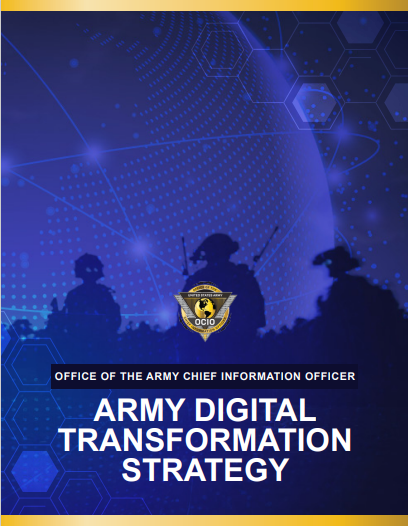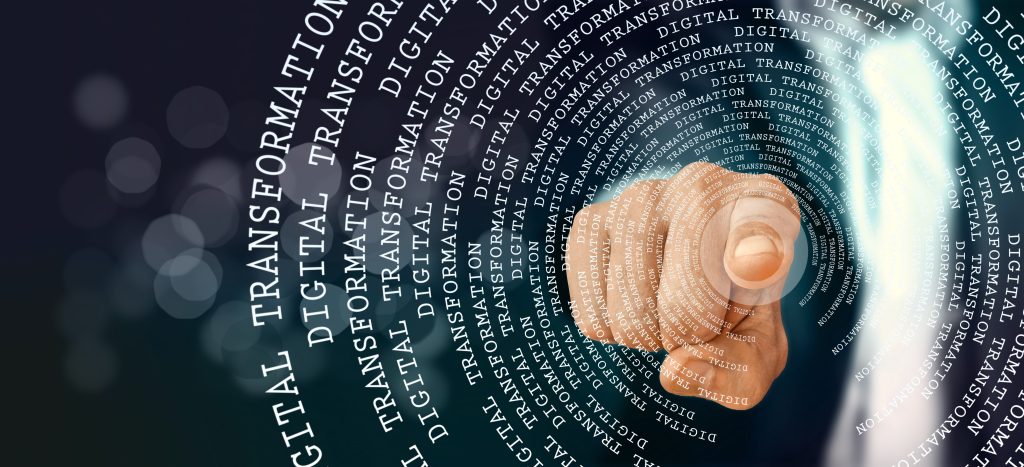
THE JOURNEY: Like any well-planned journey, digital transformation requires a clear roadmap and guidance. (Image by Ryan McGuire, Pixabay)
The Army promotes a culture of learning by providing training to upskill the acquisition workforce on new digital technologies.
by LeAndrea White
With the ever-evolving landscape of technology, digital transformation has become a critical necessity for organizations across the public and private sectors. The Army and its acquisition workforce are no exception. Embracing digital transformation is crucial to maintain a competitive edge and ensure the Army’s readiness for future challenges. Digital transformation is not just about technology, but also about our people. The Army’s digital transformation is a necessary journey everyone must take to keep our Army modern and effective.
Point of Origin – The Need for Change
Every journey has a starting point, and for the Army, it was the recognition that traditional approaches were no longer sufficient to meet the demands of modern warfare. This point of origin is characterized by rigid procedures within the acquisition process that make developing and fielding technology and software cumbersome and slow; outdated policies based on isolated systems, and a workforce that isn’t always empowered to innovate on a large scale. These difficulties are made even more complicated by the fast pace of technological changes. To navigate, the Army is embarking on a transformational journey that supports Army modernization of a more lethal, ready and digital Army of 2030 that can dominate in technological environments. There are efforts underway to modernize and drive towards open systems for interoperability and flexibility across operational and technical architectures; simplifying data collection and organizing complex data into a more straight forward format that allows effective and efficient data-driven decisions; and reforming the software development process to enable smaller, faster, incremental delivery of capabilities. This includes the recent development of the new Unified Data Reference Architecture plan, a standardized framework to help govern the acquisition of data-centered capabilities, that will lead to reduction of complexity and enable data products to easily share data.

ARMY STRATEGY
The Army Digital Transformation Strategy, established by the Office of the Chief Information Officer, is the framework that sets the vision and implementation guidelines of digital transformation initiatives to be prioritized and resourced to achieve success for the future. (Image courtesy of the Office of the Chief Information Officer)
However, central to the success of these modernization efforts is a workforce that understands technology and can continually adapt and adopt new advanced technologies. Army leaders, like Young Bang, principal deputy of Army for Acquisition, Logistics and Technology (ASA(ALT)), have long recognized and reiterated that the digital transformation journey for the Army Acquisition Workforce begins with acknowledging the evolving landscape, embracing new technology and upskilling our workforce is not just a necessity, but a strategic imperative.
“Training and continuous learning, or what you may sometimes hear referred to as “upskilling” – is necessary to ensure success in our Digital Transformation Strategy – an odyssey we’ve embarked upon to empower us with the knowledge needed to use new technologies effectively as we work to achieve our mission every day,” Bang said. “Digital transformation has become a vital strategic initiative across ASA(ALT), as technology continues to reshape the way we operate to support our warfighters, stay ahead of our adversaries, and maintain our nation’s security. It involves the integration of digital technologies into all aspects of the Army, fundamentally changing processes, systems and even the overall culture of the organization.”
The Planned Route
Like any well-planned journey, this digital transformation requires a clear roadmap and guidance. It involves the workforce embracing emerging technologies such as artificial intelligence (AI), machine learning, robotics and big data analytics. These technologies provide the foundation for transforming the acquisition process, streamlining operations and enhancing decision-making capabilities. The journey involves promoting a culture of learning and innovation, through collaborative partnerships with academia and industry, with training to educate the workforce on digital literacy and leveraging emerging technologies. But also acquisition leaders encouraging the workforce and impressing the importance of digital transformation.
Part of a successful digital transformation is ensuring that we upskill our workforce with the skills and knowledge necessary to use these new technologies effectively and are familiar with certain technological concepts. Upskilling is acquiring new knowledge, skills or expertise to remain competitive. For acquisition professionals, that means learning about new technologies, software and systems that will help them make better, faster and more informed decisions. The Army Director, Acquisition Career Management (DACM) Office, with the support and collaboration of the Deputy Assistant Secretary of the Army (DASA) for Data Engineering and Software (DES) and the Army Civilian Career Management Activity, is helping to accelerate digital transformation by delivering digital training and upskilling through the online platform Udemy Business. Through Udemy, the DACM Office curated a digital foundations pathway of three prioritized courses for all acquisition professionals. The Digital Transformation 2023 – Masterclass covers the basics of digital transformation, including defining digital transformation, exploring the digital transformation framework, and topics centering around various digital technologies and design thinking. The latest feedback from a recent end of course survey indicates that nearly 90 percent of the Army Acquisition Workforce that completed the masterclass course did not experience any dissatisfaction related to the value of the training and the quality of the content provided. Product Management for AI & Data Science provides key technological concepts and AI, expands on the growing importance of AI and data in product management and a complete overview for a product manager in the field of data science. Agile Samurai Bootcamp is the third course in this foundational pathway that reviews how to setup, execute and successfully deliver agile projects, including in-depth discussion on agile teams, communication plans and the mechanics behind agile iteration.

FUTURE VISION
Maj. Robert Lee, assistant product manager for Product Manager Soldier Maneuver Sensors within Program Executive Office (PEO) Soldier, helps a member from the Office of the Assistant Secretary of the Army for Financial Management and Comptroller team, don the Enhanced Night Vision Goggle-Binocular on Feb 23, 2023. The visit helped the team learn more about products within the PEO Soldier portfolio. (Photo by Jason Amadi, PEO Soldier Public Affairs)
“We are changing the way we operate; whether it is adopting modern software practices, transitioning to data driven decision making or digitizing our engineering processes though digital engineering, the workforce must be equipped with the knowledge, skills and tools necessary to navigate and contribute to successful digital transformations within ASA(ALT). Whether you hold a technical or non-technical role, this training will provide valuable insights and empower you to adapt to the rapidly evolving digital landscape. We must collectively understand the concepts and lexicon associated with this transformation across all disciplines to ensure we are all on the same page and execute our mission,” Bang said in a recent message to the workforce that emphasized the importance of completing the three digital foundations pathway courses in Udemy. These three courses are now a part of the Contribution-Based Compensation and Appraisal System as a new mandatory objective for digital literacy. Although this is only applicable to acquisition-coded civilian and military members in ASA(ALT), the U.S. Army Acquisition Support Center and program executive offices are encouraged to complete the courses to support the Army’s overall digital transformation priority.
Increased collaborations and partnerships with industry and academia have become more important, as these are innovation sectors that have technology at the forefront and can assist with access to learning tools to upskill the workforce – minimizing gaps and expanding abilities to help grow the Army Acquisition Workforce now and into the future. The DACM Office has also launched a new digital transformation training course, Digital Data Leaders, through partnership with Carnegie Mellon University to provide key leadership with a working knowledge of state-of-the-art data concepts and best practice examples. The course assists Army leadership in the development of a robust enterprise data management capability to improve decision-making to better support the mission of the Army. Course topics include data management, data science, decision making, emerging technology, change management, data privacy and security. In partnership with Coursera, Defense Acquisition University is building out knowledge areas and credentials in software development, DevSecOps, artificial intelligence and cybersecurity that will be available at the foundational level. These learning resources will build in-demand skills taught by top instructors from leading universities and companies like Yale and Google.
NOT JUST A Destination
No journey is without its challenges, and the Army’s acquisition digital transformation journey will likely encounter a few obstacles. Resistance to change and skill gaps can be counted among the hurdles to overcome. This journey has already yielded encouraging outcomes, particularly at the Program Executive Office for Enterprise Information Systems (PEO EIS).
“Digital transformation is hard. It pushes individuals to think beyond ‘what is’ and focuses on ‘how awesome can it be?’. Since the beginning of our partnership with DASA DES, we have seen tangible results in terms of applying industry best practices to replace legacy military processes, better employment of modern technology for better products, and far greater focus on Soldier-centric design. I can say with certainty that the PEO, writ large, is starting to show the results of our upskilling with respect to digital transformation,” said William Hepworth, deputy program executive officer and Acquisition Career Management Advocate (ACMA) for PEO EIS. “The PEO EIS mission to accelerate and maintain our digital and agile transformation depends on our ability to upskill our workforce to thrive in a more dynamic culture that embraces change and uncertainty to deliver better products and service for our Soldiers. We are heavily invested in this initiative and find that our staff is energized around upskilling and putting their knowledge to use daily with tangible results. As the ACMA for PEO EIS, I am thrilled to witness this significant and positive change throughout the PEO.”

GOING DIGITAL
Embracing digital transformation is crucial to maintain a competitive edge and ensure the Army’s readiness for future challenges. (Image by Gerd Altmann, Pixabay)
The Army’s digital transformation journey is not merely a destination but an ongoing collective endeavor, requiring the commitment and dedication of every individual. Together, we embark on this journey, knowing that the path ahead may be challenging, but the rewards are immeasurable.
“The Army Acquisition Workforce aren’t passive travelers, but rather a driving force that helps propel the Army forward. We are the ones who bring new technology and ideas ensuring the Army stays ahead and ready. So, it is imperative we are up to date on new technology, gain improved understanding of the many ways it can impact every aspect of the work we do,” said Ronald Richardson, director of DACM. “There is great value in these partnerships and courses that are aimed at upskilling, and sometimes even reskilling, to expand individual abilities and close skill gaps to master evolving requirements. We’ve got to be able to grow the workforce in this way and use this as an opportunity to meet future challenges, because a digitally transformed Army cannot happen without a digital transformed Army Acquisition Workforce.”
For more information on digital transformation for the acquisition workforce, visit the DACM Office’s Digital Transformation webpage.
LEANDREA WHITE supports the Army Director, Acquisition Career Management (DACM) Office, as a communications analyst and the Acquisition Career Management Advocate (ACMA) program manager at Fort Belvoir, Virginia. She holds a B.S. in public relations and marketing from the University of Central Missouri. She earned a certificate in change management and has served as a logistics journeyman in the United States Air National Guard.


